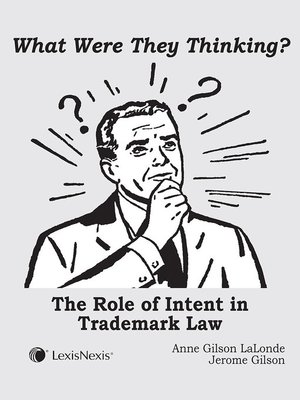Gilson on Trademarks
ebook ∣ What Were They Thinking? The Role of Intent in Trademark Law · Gilson on Trademarks (1)
By Anne Gilson LaLonde

Sign up to save your library
With an OverDrive account, you can save your favorite libraries for at-a-glance information about availability. Find out more about OverDrive accounts.
Find this title in Libby, the library reading app by OverDrive.



Search for a digital library with this title
Title found at these libraries:
| Loading... |
Trademark law broadly implicates subjective states of mind in multiple contexts and for multiple purposes. Indeed, intent is woven into the very fabric of trademark law. It is central to most courts' analysis of likelihood of confusion and a key component of the defense of fair use. It is a fundamental part of the cause of action of cybersquatting as well as a safe harbor from its liability. It is a statutory factor in cases of dilution by blurring as well. Bona fide intent to use is central to the ability to succeed in an intent-to-use application at the USPTO. Seizure of counterfeit goods can be punishable under the Lanham Act when done in bad faith, and one can be liable for committing fraud against the USPTO by making false statements knowingly and with an intent to deceive the Office. And there are other examples, such as intent not to resume use in an abandonment case and innocent local use where the defendant adopted its mark without knowledge of the plaintiff's.
This paper makes a fundamental query: whether the current state of intent in trademark law makes sense. While intent has been referenced in cases for decades, it benefits the law to reexamine long-time practices followed reflexively. We suggest that, in trademark infringement cases in particular, the current relentless reliance on intent is a misplaced and unreliable shortcut.






